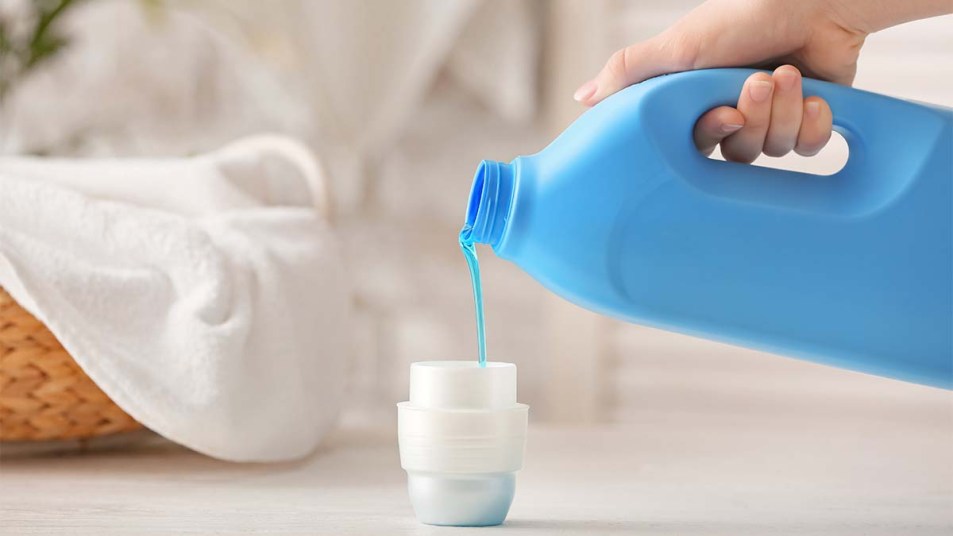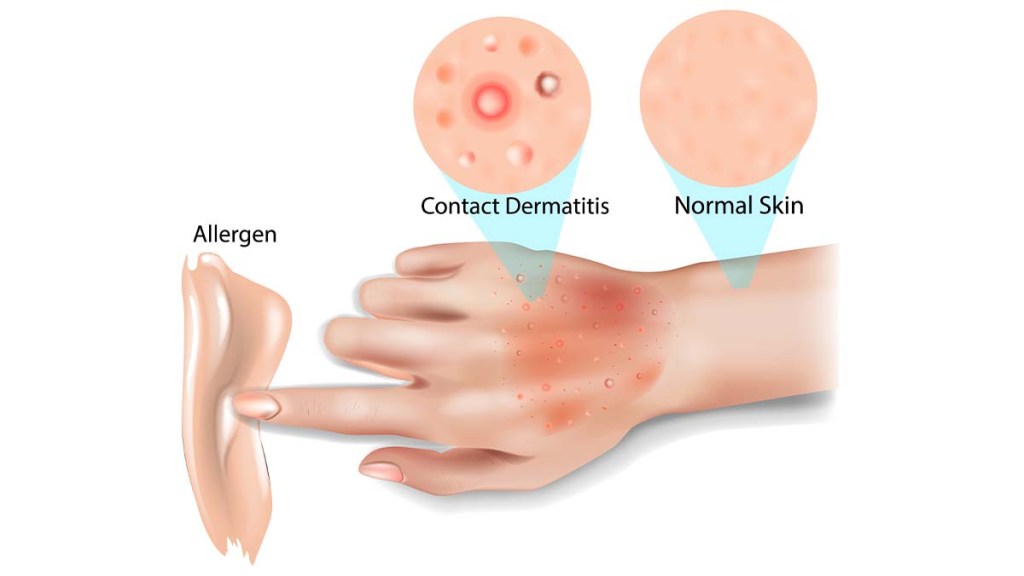Your Laundry Detergent Could Be the Cause of Your Skin Rash
Choosing the right formula makes a huge difference.

Doing laundry is one of life’s tedious but necessary tasks. Its reward is an empty hamper and the smell of fresh, clean clothes. However, if you have sensitive skin, doing the laundry can be more than annoying; it can be painful, too. That’s because many detergents contain harsh chemicals that cause people with certain allergies to break out in a bumpy, neon red rash. Known as contact dermatitis, this skin inflammation can take you from fresh and clean to itchy and uncomfortable before you realize it’s happening.
According to research, contact dermatitis from laundry detergent is rare. That said, detergents with harsh chemicals aren’t doing your skin any favors. We spoke to Todd Minars, MD, board-certified dermatologist and owner of Minars Dermatology, to learn more about the role that detergent can play in developing this skin rash.
Understanding Contact Dermatitis
“The two main types of contact dermatitis are irritant contact dermatitis and allergic contact dermatitis,” says Dr. Minars, “and they behave very differently.” Irritant contact dermatitis is not specific to a person. Chemicals defined as “irritants” will, with enough time and exposure, affect most people. The difference is the threshold. Someone with sensitive skin will likely be affected by less exposure to the irritant, and may have a more severe reaction than a person with less sensitives skin.
Allergic contact dermatitis, on the other hand, only occurs in people who experience an immunologic response – typically an itchy, red rash – to a particular allergen. A person who lacks the allergy can be exposed to the allergen and never have a reaction.

How Laundry Detergent Could Trigger a Skin Rash
Conversations about harsh chemicals in laundry detergents imply irritant contact dermatitis. However, Dr. Minars says that most of the detergent reactions he sees are allergic. After washing and rinsing your clothes, very little detergent remains. This is why, he notes, that only the most sensitive skin becomes irritated. But, if you have an allergy, there is sufficient detergent residue to trigger an immunological response.
One caveat: Hand-washing clothes in detergent involves direct skin exposure to the detergent, which can cause an irritant reaction (even if you aren’t allergic).
Cory Gaskins, BSc, MD, CCFP, director of cosmetic medicine and dermatology at Skin CV, lists three laundry detergent ingredients that may lead to contact dermatitis:
- Benzisothiazolinone (BIT)
- Methylisothiazolinone (MI)
- Octylisothiazolinone (OIT)
Getting to the Root Cause of Allergic Contact Dermatitis
“Allergic contact dermatitis due to laundry detergent can be tricky to diagnose,” says Dr. Minars. This is because nearly all skin responses are the same: an itchy, red rash. Of course, using a new detergent is a big clue. One indication of a possible detergent allergy is a widespread rash that mirrors the contact points between your clothes and skin, with an especially bad rash at “friction points” where your clothes not only touch your skin, but rub against it. Look at your wrists if you wear long sleeves; your back if you sit in a chair most of the day; your shoulders if you wear a backpack.
The underarms are another place where your skin rubs against your clothes (but not the “vault” of your underarms). “When I see a red itchy rash around the periphery of the underarms that spares the vault,” says Dr. Minars, “allergic contact dermatitis to laundry detergent comes to mind.”
The definitive test for any allergic contact dermatitis diagnosis is patch testing. This, however, has its own challenges. First, it can be difficult find a doctor who performs patch testing. (Check the American Contact Dermatitis Society website for a list of patch testers by region). Second, the test itself requires several visits to the doctor – which requires wearing itchy patches on your back for several days and making sure they don’t fall off. Dr. Minars says he often instructs patients to change detergents to something like All Free Clear or Tide Free before patch testing, to see if that solves the problem.
Another tricky part is that changing laundry detergents can take several weeks to show results. This is because it can take several laundry cycles for the initial allergen to be completely washed out of clothes and machines.
Other Ways to Prevent Detergent From Ruining Skin and Clothes
Zack Kutchma, associate brand manager at Swash Laundry Detergent, says that choosing a detergent depends on factors like average load size, varying types of stains, and hard water. To accommodate sensitive skin, Kutchma advises using a phosphate-free detergent like Swash (Buy from Amazon, $17.99), which is also formulated to fight stains without harsh chemicals. Following that, he suggests these laundry care tips:
- Less is more when it comes to detergent. Using too much detergent can reduce your washer’s ability to thoroughly rinse your clothes. The causes detergent build-up on clothing and can lead to contact dermatitis. (Note: Follow your washer’s manual or the manufacturer’s website to see how much detergent to use per load.)
- Properly take care of your clothes. Washing frequently helps reduce allergens, and washing correctly limits snags and fabric damage that can irritate skin. Follow your clothes’ care symbols for guidance on water temperature, drying, ironing, and more.
- Wash and dry your bed sheets frequently. Thoroughly drying your bed sheets is crucial because it helps to kill dust mites that can cause skin allergies. Using steam and heat settings or ironing your sheets can further eliminate allergens.
- Don’t overload the machine. Knocking out an entire load in one cycle sounds good in theory, but your clothes need to circulate inside the machine to be sufficiently cleaned. Instead of stuffing it all in, separate into smaller loads and use a concentrated detergent.
A Final Word
Clean clothes shouldn’t come at the cost of your skin. To avoid contact dermatitis, choose a detergent without harmful chemicals, wash small to medium loads, and avoid using too much cleaning product in each cycle.












